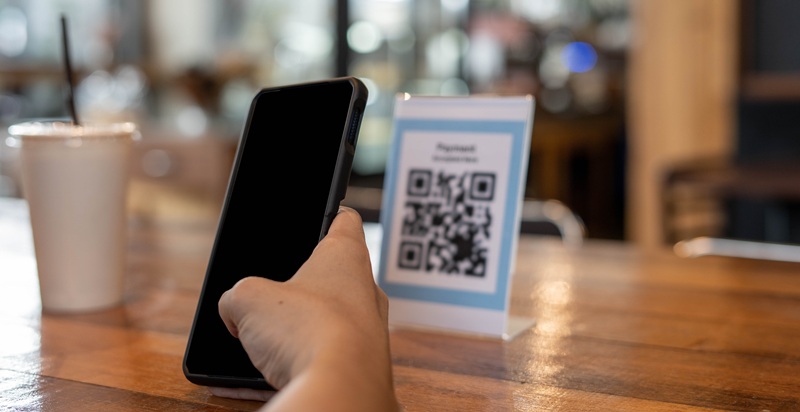The potential of QR codes to facilitate instant payments in the U.S. is garnering significant attention from industry experts and financial institutions. Instant payments, known for their speed, security, and reduced transaction costs, offer substantial benefits for both businesses and consumers alike. However, the absence of a simple and efficient method for consumers to instantly pay businesses has stifled widespread adoption in the U.S. market. QR codes are emerging as a promising solution, poised to bridge this crucial gap and revolutionize the way Americans handle financial transactions.
The Promise of Emerging Payment Methods
QR Codes in Global Markets
Emerging payment methods, particularly mobile payments facilitated by QR codes, promise enhanced capabilities and improved user experiences. In countries like China and Brazil, QR codes have already become a mainstream payment method, utilized extensively across various sectors including retail, restaurants, e-commerce, and public services. This widespread acceptance can be attributed to the ease and convenience of transferring funds directly from bank accounts without the need to share sensitive information. The reduced security risks associated with QR codes have further cemented their popularity among consumers and businesses in these regions.
Using QR codes for instant payments not only simplifies the transaction process but also addresses key security concerns, as they limit the exposure of personal financial data. By encoding payment details within the QR code itself, the chances of human error are minimized, and the security of the transaction is significantly enhanced. This level of security and convenience has made QR codes a viable alternative to traditional "pull" payments, such as credit cards and ACH transfers, which require customer authorization and are dependent on external factors.
Standardization of QR Code Encoding
For QR codes to reach their full potential in the U.S., creating a standardized encoding protocol is critical. The Accredited Standards Committee X9 (ASC X9) is currently working towards establishing such a standard, although it remains in its preliminary phases. Establishing a unified standard will ensure compatibility across different platforms and payment systems, reducing the risk of fragmentation and enhancing the user experience.
Standardization efforts are crucial for fostering consumer and merchant confidence in QR code payments. By adhering to a common set of guidelines, financial institutions and technology providers can develop interoperable solutions that streamline the payment process and eliminate barriers to adoption. This collaborative approach is essential for harnessing the full potential of QR codes and realizing the benefits of instant payments on a national scale.
The Role of NFC Technology
NFC: A Prelude to Instant Payments
Near-field communication (NFC) technology has played a pivotal role in the early stages of instant payment adoption. Services like Apple Pay and Google Pay have introduced millions of consumers to the convenience of contactless payments, setting the stage for broader acceptance of instant payments. For instance, Apple plans to integrate direct bank account payments into Apple Pay, which could further accelerate the transition to instant payments among users already familiar with NFC technology.
NFC payments have demonstrated the benefits of secure, seamless transactions, building consumer trust in digital payment methods. The success of NFC can be leveraged to promote the adoption of QR codes, especially as consumers seek flexible and accessible alternatives. By highlighting the complementary nature of these technologies, financial institutions can create a cohesive ecosystem that supports various payment preferences and devices.
Advantages of QR Codes Over NFC Technology
Despite the advancements in NFC technology, QR codes offer distinct advantages that could make them the preferred method for instant payments. One of the primary benefits of QR codes is their flexibility. They can be printed or displayed on any device, enabling businesses to accept payments without investing in specialized hardware. This accessibility is particularly important for users with older mobile phones that lack NFC compatibility, ensuring inclusivity in the digital payment landscape.
Moreover, QR codes are cost-effective and easy to implement, making them an attractive option for small businesses and merchants. The simplicity of generating and scanning QR codes reduces the need for extensive technical knowledge or infrastructure, lowering the barrier to entry for many enterprises. As a result, QR codes have the potential to democratize instant payments, providing a universal solution that caters to a diverse range of users and business needs.
Conclusion
The potential for QR codes to enable instant payments in the United States is attracting considerable attention from industry experts and financial institutions. Known for their speed, security, and cost-efficiency, instant payments offer significant advantages to both businesses and consumers. Nonetheless, the widespread adoption of instant payments in the U.S. has been hampered by the lack of an easy and effective method for consumers to pay businesses instantly. QR codes are emerging as a promising solution to address this issue. By allowing for quick, seamless transactions, they could transform how Americans manage and execute financial transactions. This technology not only simplifies the payment process but also enhances security and reduces transactional friction. As QR codes become more commonplace, they are poised to revolutionize the financial landscape, making instant payments more accessible and user-friendly. Financial institutions are keen on this evolution, anticipating that QR codes could be the key to finally realizing the full potential of instant payments in the American market.

